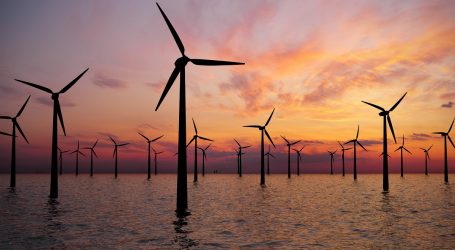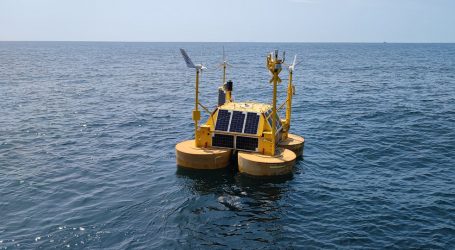The use of all identified areas in the Polish part of the Baltic Sea for wind farms will translate into the construction of 33 GW of capacity, capable of producing 130 TWh of electricity annually, according to a report by the Polish Wind Energy Association.
In the report “Offshore wind energy potential in Poland”, published on Wednesday, PWEA identified 20 new areas in the Baltic Sea – two in territorial waters and 18 in the exclusive economic zone, where windmills with a total capacity of almost 18 GW and an annual production of 70 TWh could be built. All these areas cover a total of 2171 sq km.
The potential of the areas already earmarked for offshore wind energy in the Polish Maritime Spatial Development Plan is 15.3 GW and 60 TWh annual production.
– Terrorist actions by Russia make it imperative for us as a responsible industry to prepare measures to ensure Poland’s energy independence as soon as possible,’ PWEA President Janusz Gajowiecki emphasised, opening the Offshore Wind Poland conference in Warsaw, where the report was presented.
– The use of RES is certainly the right answer to the situation, and it is offshore wind energy that is developing most dynamically out of all renewable sources, Gajowiecki added.
Poland’s Energy Policy until 2040, in its current version, envisages the construction of 11 GW of capacity in the Baltic Sea with an annual production of less than 40 TWh. In comparison, Poland’s annual electricity consumption is in the order of 170 TWh and is expected to increase to around 190 TWh by 2030.
In order to realise the much larger identified potential, the Association postulates in the report first and foremost an update of the PEP 2040 and the Development Plan, adjustment of regulations to allow for additional projects, ensuring grid connectivity, simplification of administrative procedures, etc. The Plan should also be amended as not all areas currently indicated in it are suitable for wind farms.
As PWEA emphasises, the postulated update of the NEP, i.e. the strategic document, will constitute the foundation for further legislative and regulatory changes. At the same time, according to the Association, the update should follow the assumptions of the Fit for 55 package, so that instead of 23 per cent of the RES share in gross final energy consumption, this level is increased to 40-45 per cent.
The amendment to the Spatial Development Plan for Polish maritime areas should in turn take into account the designation of new identified areas for wind energy. As PWEA emphasises, these are areas of low conflict with other land uses. The association also emphasises that it is necessary to amend the Offshore Act, which in its current version provides for the construction of and support for 11 GW of capacity. Aiming to fully exploit the potential of the Baltic Sea requires a discussion on the shape of the future support model and the manner of granting location permits, the report stresses.
We are aiming to remove the administrative barriers that today stand in the way of these projects,’ assured Deputy Climate Minister, Government Plenipotentiary for RES Ireneusz Zyska. As he admitted during the conference, the potential of the Baltic Sea is much greater than the 11 GW of power assumed in PEP 2040. The waters are shallow, the geology is favourable, windiness is high, and this potential should be used for the benefit of Poland and the whole of Europe,’ Zyska said.
Under the current regulations, support has been granted to projects with a capacity of 5.9 GW, the first of which are to start in 2026. In subsequent phases, differential contracts for 2.5 GW are to be allocated – these auctions are planned for 2025-2027.
source: PortalMorski.pl




